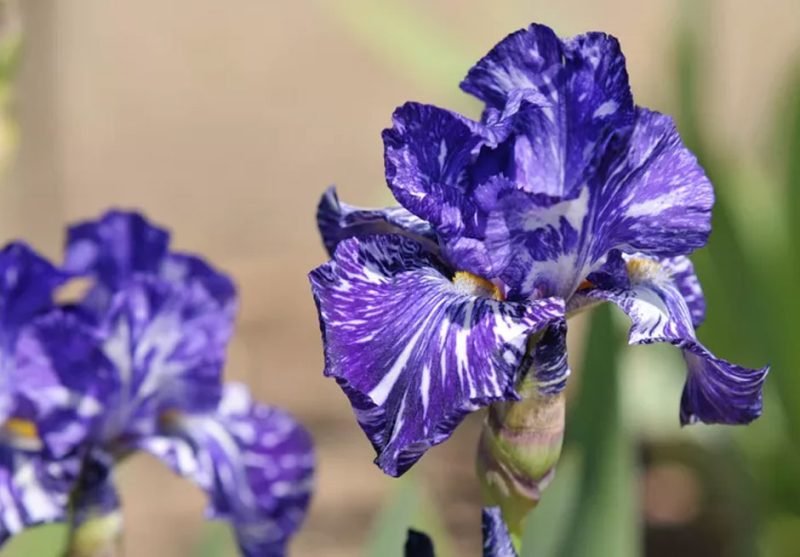
Batik German iris is truly a mesmerizing flower that adds beauty and fragrance to any flower border. Its royal purple blooms with white blotches create a broken color effect that is a sight to behold. If you want to learn how to care for this stunning herbaceous perennial, keep reading.
Growing Batik German Iris
One of the essential things to keep in mind when growing Batik German iris is its planting depth. This plant prefers a shallow planting depth, so make sure to plant the rhizomes no deeper than one inch into the soil.
When the flowers have bloomed, deadhead the plant by removing the flower stems down to ground level. To avoid bacterial and fungal diseases, maintain a clean bed and clear any debris around the plants after a hard frost in autumn. You can also cut the leaves down to the ground level at this time.
Batik German iris is a deer-resistant plant that attracts butterflies and hummingbirds. To prevent overcrowding, divide the plant every four years or so.
Light
Batik German iris can tolerate light shade, but it will flower best when grown in full sun.
Soil
To promote proper drainage, work humus into the soil.
Water
Keep the soil evenly moist, but do not allow the ground to become too soggy. Once established, the plant is moderately drought-tolerant.
Fertilizer
Apply fertilizer high in phosphorus twice a year to boost growth.
Varieties
Batik German iris is a hybrid bearded iris, but there are many other types of irises. They come in various colors and sizes and require different growing conditions. Examples include the reticulated iris, blue flag, and Japanese iris.
Landscape Uses
Batik German iris is an excellent plant for the middle row of a layered perennial flower bed or as an edging plant. It also makes a beautiful cut flower, and its clumping growth habit adds a vertical element to your flower borders.
What the Names Mean
The botanical name of the Batik German iris is Iris germanica ‘Batik.’ Germanica refers to its origin, and bearded iris refers to the presence of small hairs on the flowers. The cultivar name, Batik, refers to an ancient artistic technique, which inspires the purple-and-white coloration of the flower.
In conclusion, caring for Batik German iris is not complicated, but it requires attention to detail. As long as you maintain proper planting depth, keep the soil moist, and fertilize properly, you will enjoy this bicolored show-stopper for years to come.

